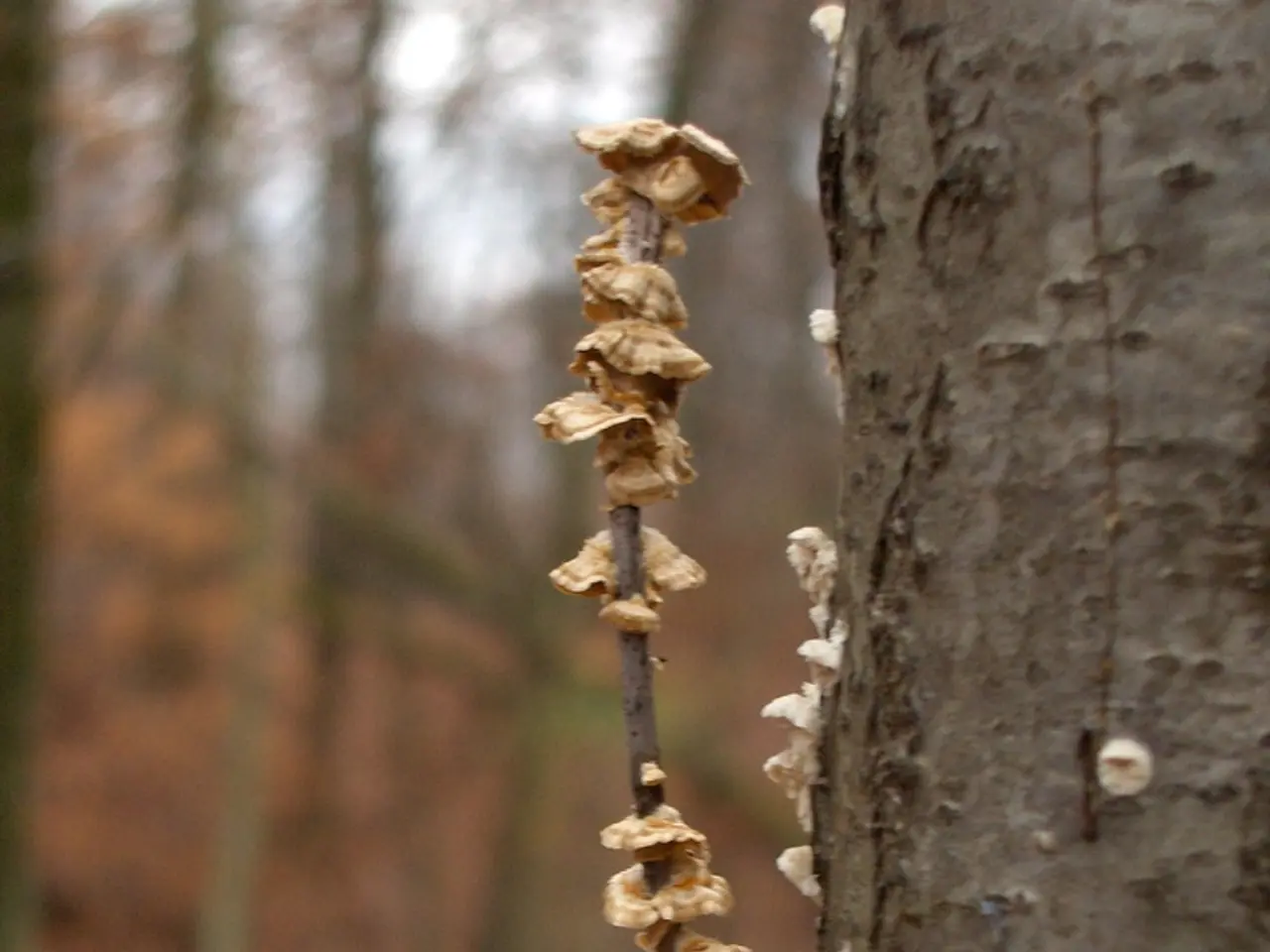Enigmatic Spherical Objects Found in Soil of a Plant Bed: Uncovering Their Identity
In the world of soil, a diverse array of elements work together to support plant growth. Among these are Perlite, saprophytic fungi, slime mold, and fertilizer prills, each with its unique role to play.
Perlite
Perlite is a horticultural medium made from volcanic glass, superheated to create a lightweight, porous material. This substance is used to improve drainage and aeration in potting mixes, preventing waterlogging and reducing soil compaction. By enhancing soil structure, roots can breathe and absorb water and nutrients more efficiently, promoting healthy root growth.
Saprophytic Fungi
Saprophytic fungi are organisms that obtain their nutrients by decomposing dead organic matter. They play a crucial role in breaking down plant residues and recycling nutrients, indirectly benefiting plant growth by releasing nutrients back into the soil. While they do not directly harm or benefit plants, an overabundance can reduce oxygen availability, potentially affecting plant growth.
Slime Mold
Slime molds are simple, multicellular organisms that feed on decaying organic matter. They are neither plants nor animals but belong to the kingdom Protista. Slime molds do not harm live plants but feed on dead organic matter. An overabundance can indicate high levels of organic decomposition, which might affect soil oxygen levels and plant growth.
Fertilizer Prills
Fertilizer prills are small balls of slow-release fertilizer that come with the soil and are designed to degrade and release nutrients when watered. They are typically made from a variety of nutrients, designed to provide sustained nourishment to plants. It's important to check the label for proper identification, as some prills may contain synthetic materials.
Fungal hyphae are the primary means of nutrient and water absorption for fungi. They can form mycorrhizae, a symbiotic relationship with plant roots, aiding in nutrient exchange. Fungal hyphae can also help plants by improving soil structure and water retention. They explore the soil, secreting digestive enzymes onto their food source, often dead organic materials.
Slime molds and fungal hyphae share some similarities in appearance. Slime molds can appear as a slimy, colorful mass, often mistaken for a fungus. Fungal hyphae are typically white or yellow in color and can be seen as white fungal growth on the soil surface, in bark mulches, and compost. Slime molds can form "fruiting bodies" or spore-producing structures, which resemble mushrooms.
Slime molds and fungal hyphae have distinct preferences for their environments. Slime molds are sensitive to light and moisture, preferring dark, damp environments, while fungi prefer slightly acidic conditions and undisturbed soils.
In summary, while perlite is beneficial for improving soil structure, saprophytic fungi and slime mold contribute to nutrient cycling and decomposition, usually without harming plants. However, imbalances in their populations can affect plant health indirectly through soil conditions. Fertilizer prills provide sustained nourishment to plants, but it's important to check the label for proper identification, as some prills may contain synthetic materials. Fungal hyphae play a crucial role in plant health by forming mycorrhizae and aiding in nutrient exchange, as well as improving soil structure and water retention.
In the home-and-garden context, adding Perlite to a potting mix can help create a well-draining and breathable soil condition, supporting healthy root growth and ultimately enhancing plant lifestyle. On the other hand, saprophytic fungi and slime molds that reside within the soil play a crucial role in nutrient cycling by decomposing dead organic matter and recycling nutrients, contributing to a healthy home-and-garden ecosystem.




